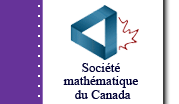I'm a teacher trying to find a way to make some stats work from first principles. The topic is expectation algebra and it is for the top age level in high school.
By using a set of data I can show how the mean is the same as the expected value ie 2,2,3,4,4 is 15 / 5 = 3 also, 2x0.4+3x0.2+4x0.4=3. I can also show this to work for the variance in the same style but using Sum(x-mean)2/n and the Var(X) version of squaring x then multiplying by the probability ( all this for random independant samples).
Now comes the tricky bit.....when I try to show E(X+Y) = E(X) + E(Y) from setting up two data sets I get it to work only if I add each item from X to each item from Y. However, I can't get it to work for V(X+Y)=V(X) + V(Y) from two sets of data.
There must be something missing in my knowledge of how the sets are required to add together or my knowledge of expectation algebra. I am familiar with proofs but still want to show my students that the basic formulae work from groups of data whether done the long way or by use of formulae. Can you help please?

